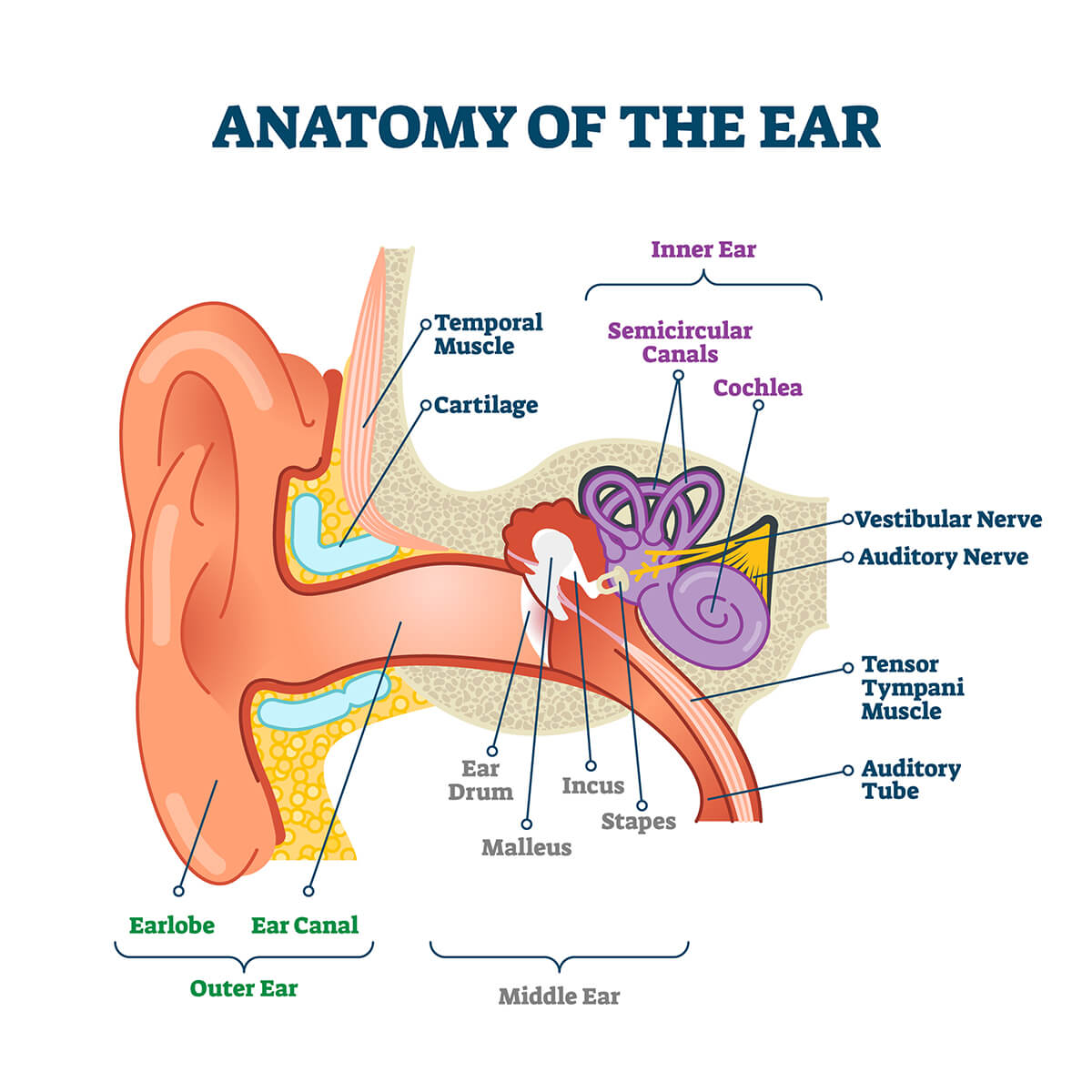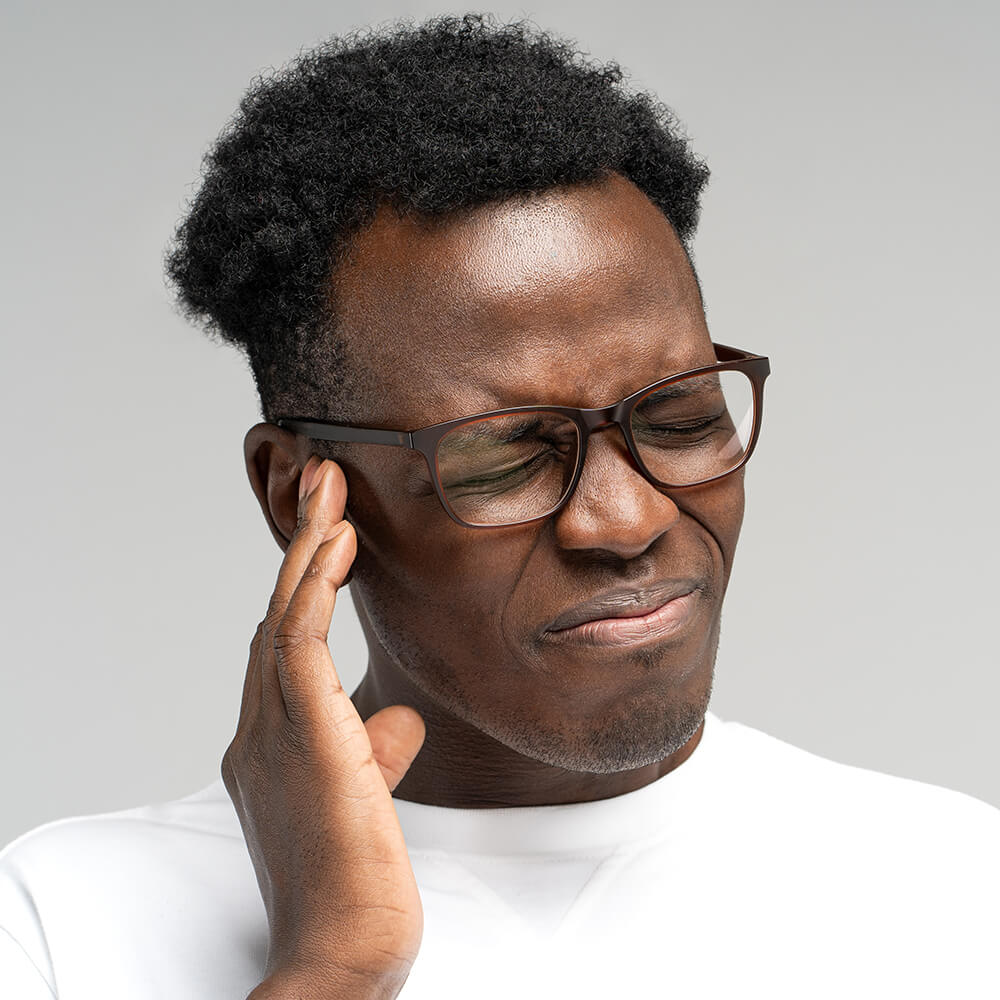Sensorineural Hearing Loss
Sensorineural Hearing Loss (SNHL)

There are two main types of hearing loss: sensorineural and conductive. Conductive hearing loss results from problems in the middle ear or ear canal, while sensorineural hearing loss (SNHL) results from problems in the inner ear or auditory nerves. While conductive hearing loss can often be cured—by, for example, removing an earwax blockage or surgically correcting a misshaped bone in the middle ear—SNHL is permanent.
This is because SNHL most frequently happens when the tiny, hair-like cells inside the cochlea in the inner ear—called stereocilia—are damaged or broken. Once these cells are damaged, they do not regrow or repair themselves. There are some 16,000 stereocilia in the cochlea, and hearing loss becomes noticeable after about 30–50% of them cease to function.

Causes of SNHL
The most common type of SNHLrequiring treatment is age-related hearing loss, or “presbycusis.” While hearing loss is not considered a normal part of the aging process, age-related hearing loss is incredibly common, affecting about one-third of those aged 60-74, and about half of those 75 and older.
Noise-induced hearing loss is also a form of SNHL. Exposure to sound levels averaging 85 dBA (decibels A-weighted) can cause SNHL after an 8-hour period of exposure. For every additional 3 dBA, the safe period of exposure is cut in half. To prevent noise-induced hearing loss, wear hearing protection whenever you are exposed to sounds averaging 85 dBA or higher.
SNHL can also be congenital. About 1–3 out of every 1,000 babies is born with SNHL, making it one of the most common birth abnormalities. About half of these cases are genetic, and half environmental. The Stanford Initiative to Cure Hearing Loss has also noted that nearly every type of hearing loss has a genetic component.
Degrees of SNHL
NORMAL
MILD
MODERATE
SEVERE
PROFOUND
The vast majority of cases of SNHL are age-related. Age-related hearing loss is a progressive type of hearing loss, meaning it tends to worsen over time. For most people, it will not progress all the way to deafness, but will plateau at a certain point. It is not possible to say exactly where any one person’s hearing loss will plateau, but regular hearing tests will reveal when hearing ability has stabilized.
While “mild” hearing loss may not sound like a big deal, it should still be treated with hearing aids. Those with mild hearing loss report more memory issues than those with normal hearing, and it makes it much more difficult to understand a conversation when any background sound is present. It is also much easier to adjust to hearing aids when hearing loss is mild, and helps to avoid the complications that come with longer-term untreated hearing loss as it becomes more pronounced.

Sudden Sensorineural Hearing Loss (SSHL)
- Infection
- Head trauma
- Autoimmune diseases
- Meniere’s disease
- Some medications
- Cardiovascular issues
SSHL may be caused by a life-threatening underlying condition. If you or a loved one experiences SSHL, you should see a doctor immediately. The most effective treatment for SSHL is a round of corticosteroids. If medication is started within two weeks of the occurrence of SSHL, there is some chance that hearing can be regained.
